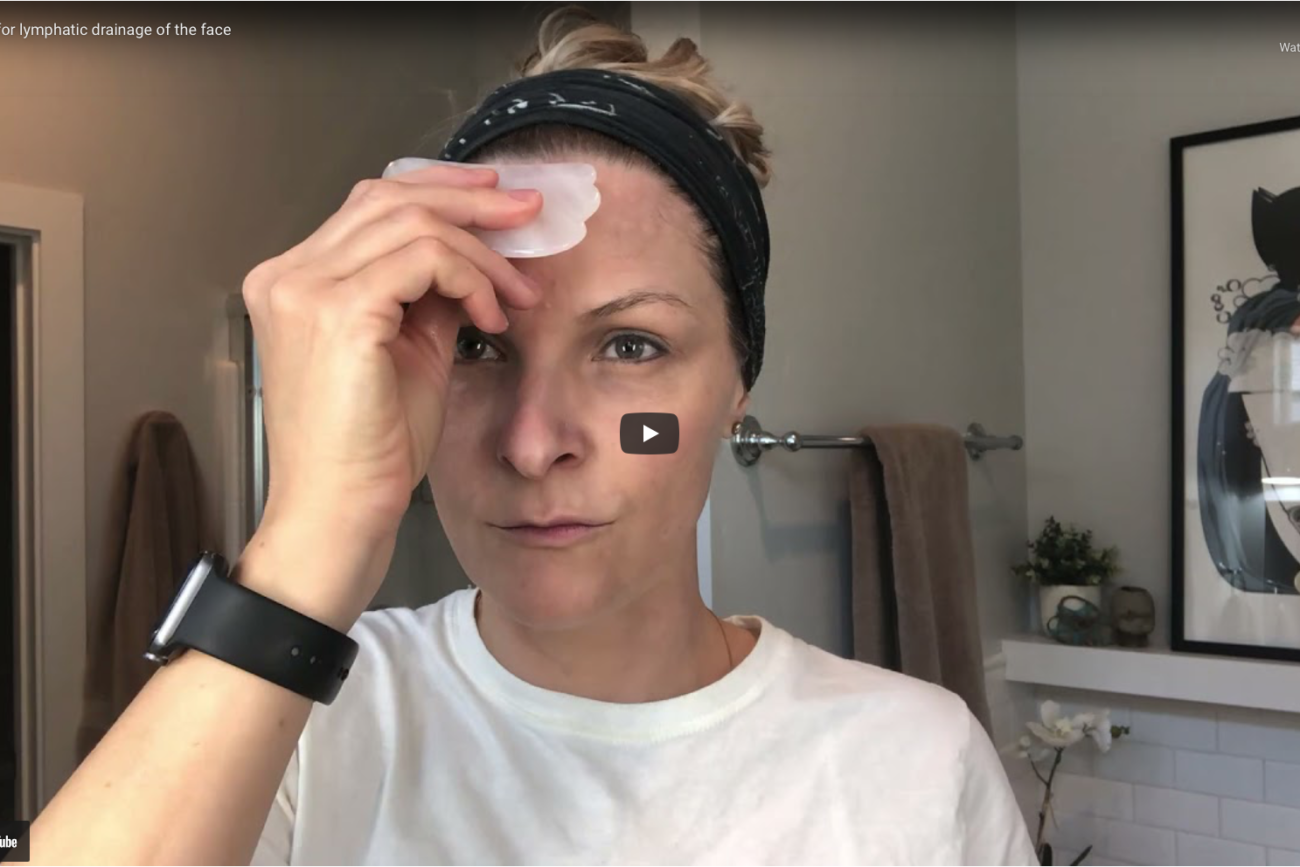BY: EMILY ROBINSON
Looks like everyone in the skincare industry is currently hot for gua sha, selling stones on their sites, and posting tutorials on social media; but what is gua sha, and why is everyone so excited about it?
Dating back to the paleolithic period, gua sha is an ancient Chinese healing technique designed to address stagnant chi by scraping the skin with a smooth-edged stone, creating flushing, and eventual bruising. The idea was to scrape away illness or disease. My acupuncturist used to perform gua sha on me when I experienced injury, and it is intense, to say the least. I would walk away with relief, but that relief came with some serious bruising.
Doesn’t exactly sound like something you want to do to your face, does it? Gua sha performed on the face is much different. The technique used on the face is much gentler, and the end goal is lymphatic drainage to reduce facial puffiness and dark circles under the eyes.
First, let’s talk about the lymphatic system. The Lymphatic system is part of the immune and circulatory systems. In simplified terms, the lymphatic system is a series of tubes that run through the body and act as a filtration system for bacteria and cellular waste. The lymphatic system is also responsible for maintaining the fluid balance in the body. This system doesn’t have an automatic pump; instead, movement, activity, hydration, and diet all effect the circulation of the lymphatic system. If you aren’t getting regular exercise, you are dehydrated, or you eat a diet high in processed foods, your lymphatic system may be stagnant. Signs of a stagnant lymphatic system can range including, bloat or swelling, chronic fatigue, depression, weight gain, digestive issues or constipation, feeling sore or stiff upon waking, and various other illnesses.
Back to the face – imagine a series of gel-filled rubber tubes running through your face. This is essentially the lymphatic system. Your goal is to move the gel, or lymph, through those tubes back down towards the heart. Each stroke should be performed 3-6 times, holding the stone at a 45 degree angle, and using enough pressure to move the lymph along the tube, but not so much pressure that you will crush the tube.
Steps:
1. Starting at the neck, drag the gua sha stone up the sides of your neck, from the collar bone to the bottom of the jaw bone.
2. Move the stone from the chin out to the bottom of the ear.
3. Slide the stone along the body of the cheek from the mouth out to the ear.
4. Using even lighter pressure, apply the tip of the stone to stroke the skin along the bottom of the orbital bone, from the inside of the eye to the outside of the eye.
5. Using the same lighter pressure, gently stroke the brow bone from the inside of the eye out.
6. Move the stone from the top of the eyebrow to the top of the forehead.
7. Slide the stone from the center of the forehead out to the temple.
8. Finalize by swiping the stone gently down the face and neck, moving the lyph back toward the heart.
Gua Sha Video Video:
For two weeks I performed gua sha on my face. By the end, I can’t say that I noticed a difference in my skin. To be fair, puffiness isn’t really a current concern for me. I don’t drink alcohol, processed foods are a rarity in my diet, and I exercise daily. My lifestyle highly reduces lymphatic stagnation. I’d be curious to see the effects on someone who struggles with a puffy face. If you decide to give it a try on your own, I’d love to know what you experience.
Learn why I created Face to Face Beauty and Wellness or shop for your favorite BeautyCounter products now.


